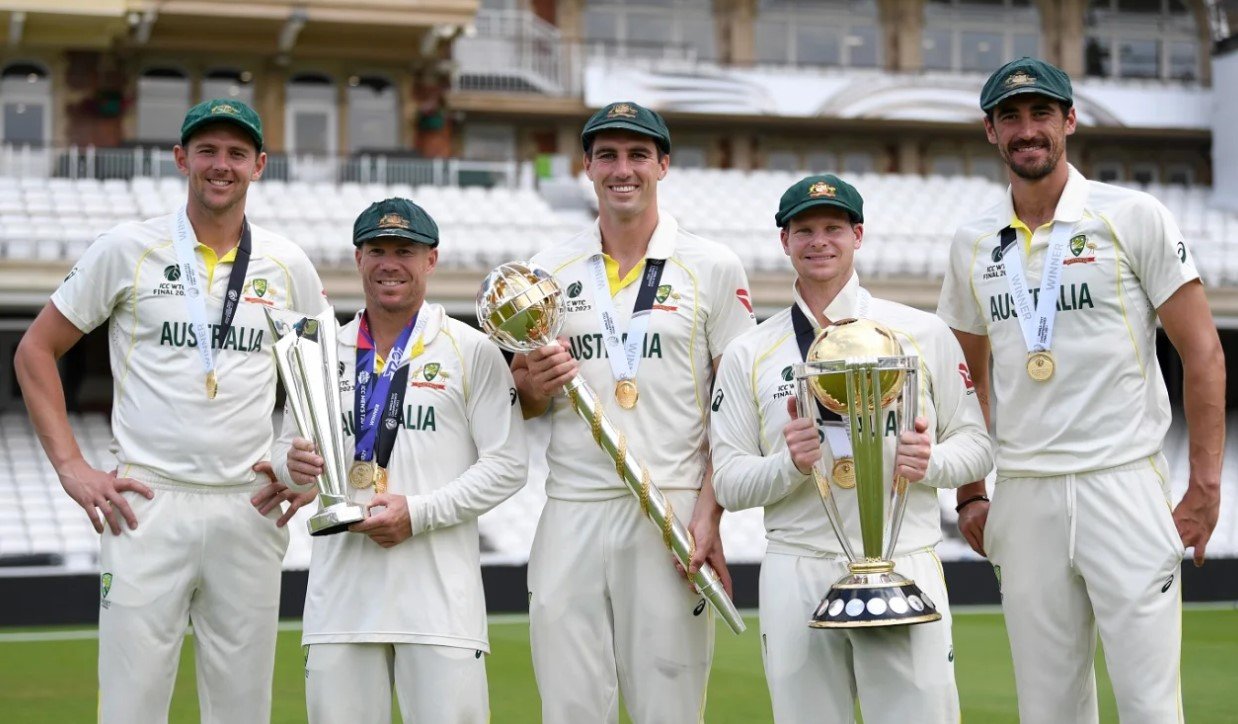
These days, amid the glitz of T20 and ODIs, many cricket fans feel Test cricket is losing ground. Yet the rise of the World Test Championship has offered a revival, giving longtime Test nations and emerging countries a platform to re‑establish themselves on the long format stage. Fans are again drawn to the drama of five‑day cricket, and teams are smartly investing in red‑ball mastery once more.
England and Australia: nurturing Test legends in the T20 era
England and Australia, traditionally pillars of Test cricket, have continued to produce greats like Joe Root and Steve Smith even while attention has shifted toward T20. Both players are proof that the red‑ball craft is still alive.
Joe Root (WTC career):
- Matches: 67
- Runs: 5,796
- Average: 51.7
- Centuries: 16
2023–25 WTC cycle alone:
- Runs: 1,968 in 22 matches
- Average: 54.6
- Centuries: 7
Steve Smith (WTC career):
- Matches: 55
- Runs: 4,278
- Average: 49.7
- Centuries: 13
Despite the lure of franchise cricket, Root and Smith remain the defining names of modern Test batting.
Kane Williamson and New Zealand’s steady rise
New Zealand, though smaller in resources, has steadily risen in Test stature through Kane Williamson’s calm and consistent batting.
Kane Williamson (WTC career):
- Matches: 28
- Runs: 2,822
- Average: 61.3
- Centuries: 11
2021–23 WTC cycle:
- Average: 75+ in 7 Tests
Williamson’s technique thrives in the long format, and his numbers prove why he remains one of the most dependable red‑ball players in the world.
Pakistan and Babar Azam: the hurt of limited Test exposure
For Pakistan, Babar Azam is clearly the brightest star of modern batting, but his potential in Tests is affected by limited match opportunities compared to his peers.
Babar Azam (overall Test career):
- Matches: 59
- Runs: 4,235
- Average: 42.8
- Centuries: 9
Between 2020–2022:
- Tests: 20
- Runs: 1,989
- Average: 54.7
- Centuries: 5
- Fifties: 14
In contrast, Joe Root has crossed 150 Tests with 37 centuries. The sheer volume of matches Root and Smith have played allows them to build enduring Test legacies, while Babar fights for the same recognition with half the exposure.
Young nations and new approaches: India, South Africa, Sri Lanka
India remains a Test powerhouse with depth in both batting and bowling. Young talents like Yashasvi Jaiswal and Shubman Gill already average above fifty in recent WTC cycles, proving the system is producing the next generation of red‑ball stars.
Sri Lanka’s Kamindu Mendis started strong with an early average above sixty in his first fourteen Tests, while South Africa continues to look for stability in a format dominated by financial pressures from T20 leagues.
Why Test cricket is staging a comeback
The WTC has transformed Tests from isolated bilateral tours into part of a bigger championship arc. This creates rivalries, finals, and a story fans can follow over years. Teams are again planning red‑ball schedules, rotating squads to protect player workload, and using domestic first‑class systems to nurture specialists.
England and Australia continue to invest in red‑ball excellence. Root and Smith had hundreds of first‑class innings before international cricket, a grounding that gave them an edge over players who debuted in the T20 age. Kane Williamson followed a similar path in New Zealand, while players like Babar Azam often juggle between formats and lose valuable Test experience.
Challenges ahead: opportunity versus exposure
The gap between players like Root and Babar is not just talent but opportunity:
- Root’s WTC matches: 67
- Babar’s WTC matches: 36
- Williamson’s WTC matches: 28
Raw ability matters, but consistent red‑ball exposure is what creates legends. Nations prioritizing Tests in their calendars will inevitably build stronger legacies.
In conclusion
Test cricket is staging a revival, thanks to the World Test Championship and renewed board commitment. Traditional giants like England, Australia, and New Zealand continue producing legends, while emerging stars such as Babar Azam show glimpses of greatness but need more red‑ball time to cement their status. With structured calendars and fan interest returning, the lost glory of five‑day cricket might finally be finding its way back.
Leave a Reply